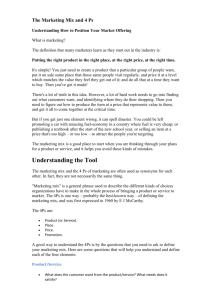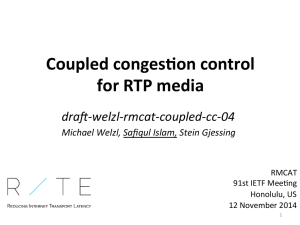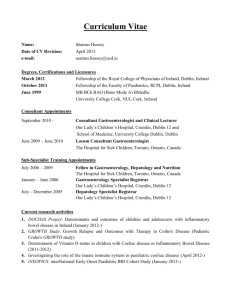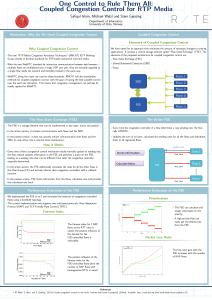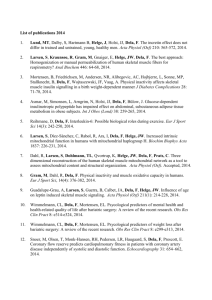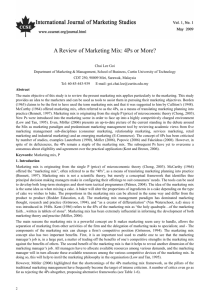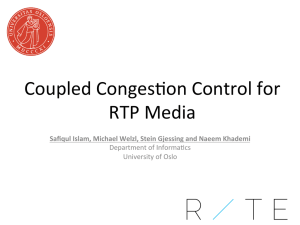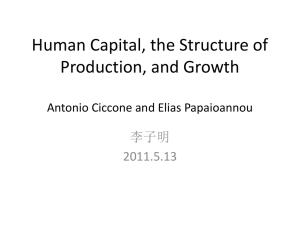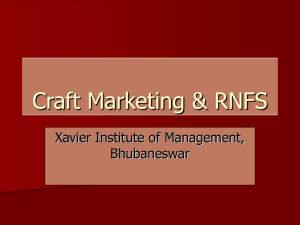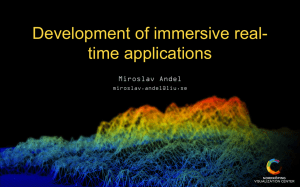Elements of Marketing - Statutární město Ústí nad Labem
advertisement
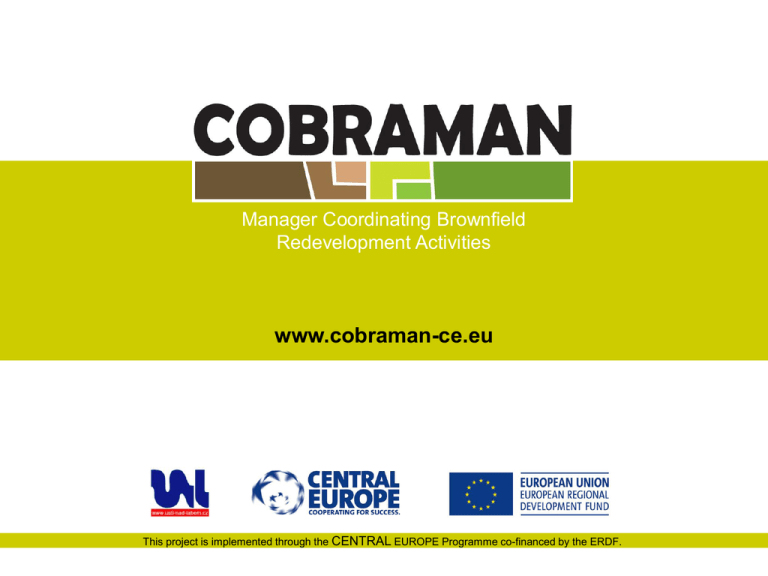
Manager Coordinating Brownfield Redevelopment Activities www.cobraman-ce.eu This project is implemented through the CENTRAL EUROPE Programme co-financed by the ERDF. Name, date, place of the event Elements of Marketing Miroslav Barták, Ph.D. Elements of Marketing What is marketing? • Science and Art • Managerial practice • Relationship between producer and comsumer Elements of Marketing What is marketing? • As a philosophy, it is based on thinking about the business in terms of customer needs and their satisfaction. • Marketing is not just a selling products. Elements of Marketing What is marketing? • As a practice, it consists in coordination of four elements called 4P's: • (1) identification, selection, and development of a product, • (2) determination of its price, • (3) selection of a distribution channel to reach the customer's place, and • (4) development and implementation of a promotional strategy. Elements of Marketing What is marketing? • Marketing is the social process by which individuals and groups obtain what they need and want through creating and exchanging products and value with others (Kotler). Elements of Marketing What is marketing? • Marketing is the process whereby society, to supply its consumption needs, evolves distributive systems composed of participants, who, interacting under constraints - technical (economic) and ethical (social) - create the transactions or flows which resolve market separations and result in exchange and consumption. Elements of Marketing What is marketing? • • • • • Marketing focuses on the satisfaction of customer needs, wants and requirements. The philosophy of marketing needs to be owned by everyone from within the organization. Future needs have to be identified and anticipated. There is normally a focus upon profitability, especially in the corporate sector. However, as public sector organizations and not-for-profit organizations adopt the concept of marketing, this need not always be the case. More recent definitions recognize the influence of marketing upon society. Elements of Marketing Elements of Marketing Public sector marketing • In the 1990s, the public sector in various European countries started to see its clientele as customers and perceived the benefits of applying marketing tools and • strategic marketing planning in order to ‘sell’ policies to citizens. Elements of Marketing Public sector marketing • Public organizations employ four types of marketing, which differ from each other in the objectives underlying them. Elements of Marketing Public sector marketing • First, ‘marketisation’ means that certain aspects of public sector activities become akin to commercial marketing in the private sector by subjecting products and services to the competitive forces of the commercial marketplace. • The aim is to bring down the price level and to bring the standard of quality more into linewith customer demands (Chapman and Cowdell, 1998). Elements of Marketing Public sector marketing • Second, all organizations use marketing for promoting their self-interest. • For instance, Burton (1999) suggests that public organizations use stakeholder marketing to secure their continued existence by support from the market and society. Elements of Marketing Public sector marketing • Third, in the case of local authorities, marketing is used to promote the area under the responsibility of the public organisation, such as city marketing. • Finally, marketing may be instrumental in promoting key political objectives, i.e. the realisation of social effects. Elements of Marketing Public sector marketing • Marketing skills developed in the private sector can be employed in the public sector to promote and deliver non-profitmotivated services. Elements of Marketing Public sector marketing • The public sector is constrained in terms of the services it is obliged to provide and hence may be unable to implement a customer-led approach even if this is desired. • Constraints may include (Bean and Hussey, 1997): Elements of Marketing Public sector marketing • legislative restrictions, • political philosophies, • lack of physical resources, • lack of financial resources. Elements of Marketing Public sector marketing • Many public sector organisations provide services for the public good which are often restrictive and controlling in nature. In such cases the user is far from • public sector does not depend on individual users for its survival: many organisations are in place due to legislation, government policies… Elements of Marketing Public sector marketing • This does not mean that the public sector organisation loses customers, because it may be (Bean and Hussey, Ibid.): Elements of Marketing Public sector marketing • a monopoly provider so the customer has no choice but to accept the service on • offer even if it does not fully meet its requirements (e.g. social services); Elements of Marketing Public sector marketing • offering a free service so the customer has to accept that something is better than nothing – this is especially so if the customer cannot afford to pay for an equivalent service (e.g. basic education services); • providing a service to customers which they must have even if they do not want it (e.g. Revenue & Customs services). Elements of Marketing Public sector marketing • In the pursuit of marketing objectives an organisation requires a strategy that makesuse of the marketing mix. This term, originally used by Borden (1965), comprised ofthe 4Ps (Product, Price, Promotion and Place). • The original 4Ps of the marketing mix were considered by many to be too restrictive, particularly with the developing service economy. Elements of Marketing Public sector marketing 4C – an alternative approach • Customer needs and wants • Cost to the customer • Convenience • Communication Elements of Marketing Public sector marketing process • Segmentation • Positioning • Value oriented marketing • Marketing tools in managerial decision making process Elements of Marketing Public sector marketing case studies – city planing and development http://www.ff.unilj.si/oddelki/geo/publikacije/dela/files/dela_21/024 %20kim%20inn.pdf http://www.plantation.org/docs/economic-dev/marketing-plan.pdf http://www.isocarp.net/Data/case_studies/858.pdf www.cobraman-ce.eu Name: Institution: Address: Phone: e-mail: web site: Miroslav Barták FSE UJEP Ústí nad Labem Moskevská 54, 400 96 Ústí nad Labem +420 602 70 53 26 miroslav.bartak@ujep.cz http://fse.ujep.cz Thank you for your attention! This project is implemented through the CENTRAL EUROPE Programme co-financed by the ERDF.
